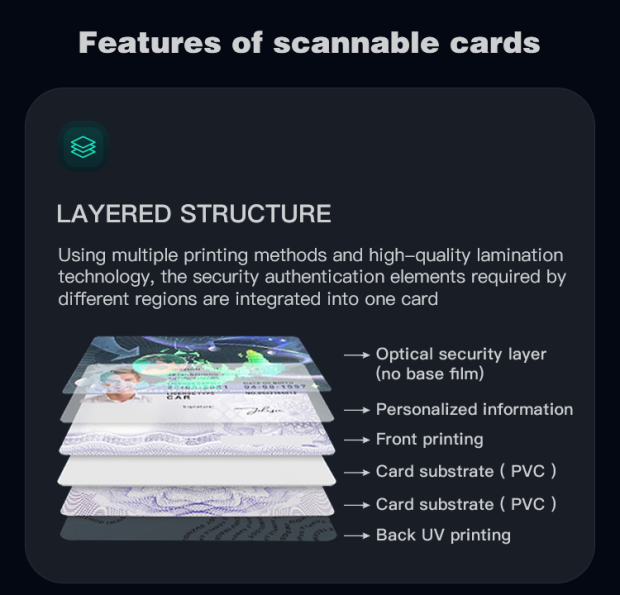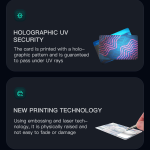In the realm of identity verification, the concept of Real ID has been a significant development. A Real ID is a form of identification that meets certain minimum security standards established by the government. These standards aim to enhance the security of identification documents used for various purposes, such as boarding commercial flights and accessing certain federal facilities.
The need for more secure identification has grown in the face of increasing concerns about identity theft, fraud, and security threats. Traditional forms of identification, like driver’s licenses and state – issued IDs, have had limitations in terms of security features. Real ID addresses these concerns by incorporating advanced security features such as holograms, embedded chips, and unique identifiers.
The Basics of Real ID
Real ID is a result of the Real ID Act of 2005 in the United States. This act was passed in response to the 9/11 Commission’s recommendations for improving security. To obtain a Real ID – compliant driver’s license or identification card, individuals are required to provide specific documents that prove their identity, legal presence in the country, and residency. These documents typically include a birth certificate, Social Security card, and proof of address.

The Real ID has a star symbol on the card, which indicates its compliance with the enhanced security standards. Federal agencies, such as the Transportation Security Administration (TSA), will require individuals to present a Real ID – compliant card or another acceptable form of identification to board a commercial flight within the United States starting from a specified deadline.
Ultraviolet – Based ID Verification
Ultraviolet – based ID verification is an emerging technology in the field of identity authentication. Ultraviolet light has unique properties that can be harnessed for security purposes. Many modern identification documents, including Real ID – compliant ones, are starting to incorporate ultraviolet – sensitive features.
Ultraviolet inks can be used in the printing of identification documents. These inks are invisible under normal light but become visible when exposed to ultraviolet light. For example, a security logo or a specific pattern on an ID card may be printed using ultraviolet ink. When a verification device with an ultraviolet light source shines on the card, these hidden elements are revealed, providing an additional layer of security.
Another aspect of ultraviolet – based ID verification is the use of ultraviolet – sensitive materials in the construction of the ID card itself. Some cards may have layers or components that react in a specific way under ultraviolet light. This could be used to verify the authenticity of the card material and ensure that it has not been tampered with.
The Intersection of Real ID and Ultraviolet – Based ID Verification
As Real ID becomes more prevalent, the integration of ultraviolet – based ID verification techniques is a natural progression. The enhanced security features of Real ID can be further strengthened with ultraviolet – sensitive elements. For instance, the holograms on a Real ID card could have ultraviolet – reactive components that add an extra level of complexity to counterfeit attempts.
Verification systems at airports, government offices, and other facilities can be equipped with ultraviolet – detection devices. These devices can quickly scan Real ID cards and identify the presence of ultraviolet – sensitive features, streamlining the identity verification process. This not only improves security but also speeds up the time it takes for individuals to pass through security checkpoints.
Benefits of Ultraviolet – Based ID Verification in the Context of Real ID
One of the key benefits is the increased difficulty of counterfeiting. Ultraviolet – sensitive materials and inks are not easily replicated by counterfeiters. The unique reaction of these elements under ultraviolet light provides a reliable way to distinguish between genuine and fake identification documents.
Another advantage is the non – intrusive nature of the verification process. Ultraviolet – based verification can be carried out quickly and without the need for extensive physical contact with the ID card. This is especially important in high – traffic areas such as airports, where efficient and non – invasive security checks are essential.
Furthermore, ultraviolet – based ID verification can be easily integrated into existing security infrastructure. Many security checkpoints already have lighting and scanning equipment, and adding ultraviolet – detection capabilities can be a relatively straightforward upgrade.
Challenges and Considerations
While ultraviolet – based ID verification offers many benefits, there are also some challenges to be addressed. One challenge is the cost of implementing the technology. Upgrading security checkpoints with ultraviolet – detection devices and ensuring that ID – issuing authorities have the necessary equipment to produce ID cards with ultraviolet – sensitive features can be expensive.
Another consideration is the need for proper training of security personnel. They need to be familiar with the ultraviolet – based verification process, how to operate the equipment, and how to interpret the results. Incorrect use of the technology could lead to false positives or negatives, which could cause inconvenience to individuals and security risks.
There is also the issue of compatibility. As new identification technologies and standards continue to evolve, ensuring that ultraviolet – based ID verification remains compatible with future Real ID enhancements and other emerging identity authentication methods will be crucial.
Common Problems and Solutions
- Problem: Inadequate Equipment for ID – Issuing Authorities
Many ID – issuing offices may not have the necessary equipment to produce ID cards with ultraviolet – sensitive features. This can delay the implementation of this advanced security measure.
Solution: The government can provide financial incentives or subsidies to ID – issuing authorities to upgrade their equipment. Additionally, there can be standardized equipment procurement programs to ensure that all offices have access to the required technology.
- Problem: False Positives in Verification
Sometimes, the ultraviolet – detection equipment may give false positive results, indicating that an ID card is fake when it is actually genuine. This can cause unnecessary delays and inconvenience to the cardholder.
Solution: Regular calibration and maintenance of the ultraviolet – detection devices are essential. Security personnel should also be trained to perform secondary checks in case of a false positive. For example, they can cross – reference the card details with other verification methods such as database checks.
- Problem: Lack of Public Awareness
Many people may not be aware of the ultraviolet – sensitive features on their Real ID cards or how the verification process works. This can lead to confusion and resistance during security checks.
Solution: Public awareness campaigns can be launched to educate individuals about the new security features of their ID cards. Information can be provided through official government websites, brochures, and at ID – issuing offices. Clear signage at security checkpoints can also explain the ultraviolet – based verification process to the public.
- Problem: Compatibility with Older ID Cards
As ultraviolet – based ID verification becomes more widespread, there may be issues with older ID cards that do not have these features. This can create problems during the transition period.
Solution: A phased – in approach can be adopted. During the initial phase, both old and new ID cards can be accepted, with additional verification steps for older cards. Over time, as more people update their ID cards to the new, ultraviolet – enhanced versions, the transition can be completed smoothly.
- Problem: Security of Ultraviolet – Sensitive Materials
The security of the ultraviolet – sensitive materials used in ID cards needs to be safeguarded. If these materials are stolen or misused, it could pose a security risk.
Solution: Stringent security measures should be in place for the storage and handling of ultraviolet – sensitive materials. Access to these materials should be restricted to authorized personnel only. There should also be regular audits and inventory checks to ensure that no materials go missing.
Fake ID Pricing
unit price: $109
| Order Quantity | Price Per Card |
|---|---|
| 2-3 | $89 |
| 4-9 | $69 |
| 10+ | $66 |



